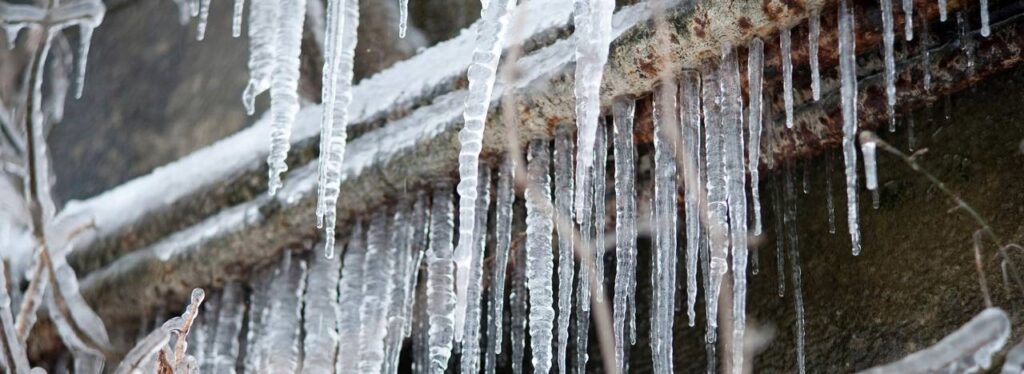We've unearthed this great article about How to Prevent Your Pipes From Freezing listed below on the net and figured it made perfect sense to share it with you in this article.

Winter can ruin your plumbing, specifically by freezing pipes. Below's exactly how to stop it from happening and what to do if it does.
Introduction
As temperature levels drop, the threat of frozen pipelines boosts, potentially bring about expensive repair services and water damage. Understanding how to avoid icy pipelines is crucial for property owners in cool environments.
Avoidance Tips
Shielding vulnerable pipes
Wrap pipes in insulation sleeves or utilize warm tape to safeguard them from freezing temperatures. Concentrate on pipes in unheated or exterior areas of the home.
Heating methods
Keep interior areas adequately heated, especially areas with plumbing. Open cabinet doors to permit cozy air to flow around pipelines under sinks.
Exactly how to recognize icy pipes
Look for decreased water flow from faucets, unusual odors or noises from pipes, and visible frost on exposed pipes.
Long-Term Solutions
Structural adjustments
Consider rerouting pipelines far from outside wall surfaces or unheated locations. Include additional insulation to attics, cellars, and crawl spaces.
Updating insulation
Purchase high-grade insulation for pipes, attic rooms, and walls. Proper insulation assists preserve consistent temperature levels and decreases the risk of frozen pipelines.
Safeguarding Outdoor Pipes
Yard pipes and outdoor taps
Disconnect and drain pipes garden hoses prior to winter. Set up frost-proof spigots or cover exterior faucets with insulated caps.
Comprehending Frozen Pipelines
What creates pipes to ice up?
Pipelines freeze when revealed to temperatures listed below 32 ° F (0 ° C) for expanded periods. As water inside the pipes ices up, it increases, taxing the pipe walls and potentially triggering them to rupture.
Threats and problems
Icy pipelines can lead to water system disturbances, residential or commercial property damage, and costly repair services. Ruptured pipes can flood homes and cause extensive structural damages.
Indications of Frozen Water Lines
Determining frozen pipes early can stop them from breaking.
What to Do If Your Pipelines Freeze
Immediate actions to take
If you think icy pipes, keep faucets open to relieve stress as the ice melts. Use a hairdryer or towels soaked in warm water to thaw pipelines slowly.
Verdict
Stopping icy pipelines requires positive measures and quick feedbacks. By recognizing the causes, indicators, and safety nets, property owners can protect their pipes throughout cold weather.
5 Ways to Prevent Frozen Pipes
Drain Outdoor Faucets and Disconnect Hoses
First, close the shut-off valve that controls the flow of water in the pipe to your outdoor faucet. Then, head outside to disconnect and drain your hose and open the outdoor faucet to allow the water to completely drain out of the line. Turn off the faucet when done. Finally, head back to the shut-off valve and drain the remaining water inside the pipe into a bucket or container. Additionally, if you have a home irrigation system, you should consider hiring an expert to clear the system of water each year.
Insulate Pipes
One of the best and most cost-effective methods for preventing frozen water pipes is to wrap your pipes with insulation. This is especially important for areas in your home that aren’t exposed to heat, such as an attic. We suggest using foam sleeves, which can typically be found at your local hardware store.
Keep Heat Running at 65
Your pipes are located inside your walls, and the temperature there is much colder than the rest of the house. To prevent your pipes from freezing, The Insurance Information Institute suggests that you keep your home heated to at least 65 degrees, even when traveling. You may want to invest in smart devices that can keep an eye on the temperature in your home while you’re away.
Leave Water Dripping
Moving water — even a small trickle — can prevent ice from forming inside your pipes. When freezing temps are imminent, start a drip of water from all faucets that serve exposed pipes. Leaving a few faucets running will also help relieve pressure inside the pipes and help prevent a rupture if the water inside freezes.
Open Cupboard Doors
Warm your kitchen and bathroom pipes by opening cupboards and vanities. You should also leave your interior doors ajar to help warm air circulate evenly throughout your home.

Do you really like reading about Helpful Tips to Prevent Frozen Pipes this Winter? Put a review directly below. We'd be glad to listen to your opinion about this post. Hoping to see you back again before long. Sharing is good. One never knows, you might be helping someone out. We enjoy your readership.
Visit The Following Page